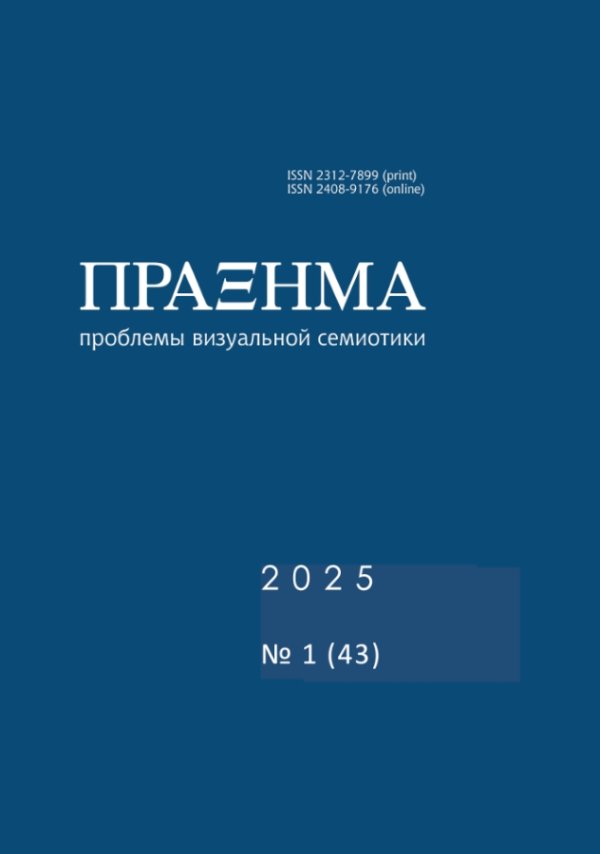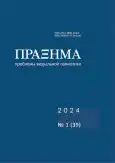VISUALIZATION OF THE SPECIFICITY OF THE PHILOSOPHICAL WORLDVIEW: DETECTION OF SEMIOTIC OPTIMUM IN THE SELECTION OF ILLUSTRATIVE MATERIAL FOR AN OPEN LECTURE
- Authors: Gorbuleva M.S.1, Melik-Gaykazyan I.V.1
-
Affiliations:
- Tomsk State Pedagogical University
- Issue: No 1 (2024)
- Pages: 143-166
- Section: OPEN LECTURE
- URL: https://bakhtiniada.ru/2312-7899/article/view/270015
- DOI: https://doi.org/10.23951/2312-7899-2024-1-143-166
- ID: 270015
Cite item
Full Text
Abstract
About the authors
Maria Sergeyevna Gorbuleva
Tomsk State Pedagogical University
Email: black_silver@bk.ru
Tomsk, Russian Federation
Irina Vigenovna Melik-Gaykazyan
Tomsk State Pedagogical University
Email: melik-irina@yandex.ru
Tomsk, Russian Federation
References
- Аббасова 2023 – Аббасова Н. С. Роль творческого наследия Питера Брейгеля в нидерландской живописи // Colloquium-Journal. 2023. № 3 (162). С. 11–16.
- Андреюшкина 2020 – Андреюшкина Т. Н. Интерпретация образа Икара на картине П. Брейгеля «Падение Икара» в европейской поэзии 1930–1990-х гг. // Вестник Волжского университета им. В. Н. Татищева. 2020. Т. 1, № 4 (33). С. 20–27.
- Бабич 2022 – Бабич В. В. Проблема иллюстрирования философии // Вестник Томского государственного университета. Философия. Социология. Политология. 2022. № 69. С. 12–17.
- Гордеев 2023 – Гордеев В. А. Ушел А. В. Бузгалин, большой друг нашего журнала // Теоретическая экономика. 2023. Т. 106, № 10. С. 115–115.
- Ибрагимов, Калимуллина 2022 – Ибрагимов Г. И., Калимуллина А. А. Трансформация лекции в современной высшей школе России // Высшее образование в России. 2022. Т. 31, № 7. С. 96–112.
- Моррис 2001а – Моррис Ч. У. Из книги «Значение и означивание». Знаки и действия // Семиотика: антология / сост. Ю. С. Степанов. М.: Акад. проект, 2001. С. 129–143.
- Моррис 2001б – Моррис Ч. У. Основания теории знаков // Семиотика: антология / сост. Ю. С. Степанов. М.: Акад. проект, 2001. С. 45–97.
- Никифоров 2001 – Никифоров А. Л. Природа философии: основы философии. М.: Идея-Пресс, 2001.
- Радаев 2022 – Радаев В. В. Как побудить студентов к чтению сложных текстов: опыт использования цифровых технологий // Высшее образование в России. 2022. Т. 31, № 7. С. 113–122.
- Стасенко 2022 – Стасенко О. П. Диалог творческих систем НВ Гоголя и Питера Брейгеля Старшего в контексте карнавальной культуры: личность и карнавал // Stephanos. 2022. № 5. С. 70–77. doi: 10.24249/2309-9917-2022-55-5-70-77
- Титова, Талмо 2015 – Титова С. В., Талмо Т. Модель интерактивной лекции на базе мобильных технологий // Высшее образование в России. 2015. № 2. С. 126–135.
- Хусаинова, Карстина, Галиханов 2022 – Хусаинова Г. Р., Карстина С. Г., Галиханов М. Ф. Оценка готовности преподавателей к инновационной профессионально-педагогической деятельности // Высшее образование в России. 2022. Т. 31, № 7. С. 42–60.
- Шестерина 2020 – Шестерина А. М. Открытые лекции как форма популяризации научного знания: традиции и современность // Вестник Воронежского государственного университета. Проблемы высшего образования. 2020. № 2. С. 111–114.
- Arpaci, Al-Emran, Al-Sharafi 2020 – Arpaci I., Al-Emran M., Al-Sharafi M. A. The impact of knowledge management practices on the acceptance of Massive Open Online Courses (MOOCs) by engineering students: A cross-cultural comparison // Telematics and Informatics. 2020. Vol. 54. Art. 101468.
- Dang, Lu, Webb 2022 – Dang T. N. Y., Lu C., Webb S. Incidental learning of single words and collocations through viewing an academic lecture // Studies in Second Language Acquisition. 2022. Vol. 44, № 3. P. 708–736.
- Honig 2019 – HonigE. A. Pieter Bruegel and the Idea of Human Nature. London: Reaktion Books, 2019.
- Tonguç, Ozkara 2020 – Tonguç G., Ozkara B. O. Automatic recognition of student emotions from facial expressions during a lecture // Computers & Education. 2020. Vol. 148. Art. 103797.
- Weiss 2020 – Weiss R. D. Pieter Bruegel and the Idea of Human Nature by Elizabeth Alice Honig // Comitatus: A Journal of Medieval and Renaissance Studies. 2020. Vol. 51, № 1. P. 279–281.
Supplementary files







